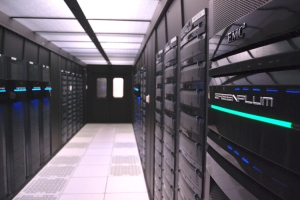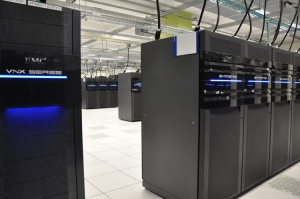This is the third part in a series on EMC’s new Durham Cloud Data Center by Stephen. Click here to read part two.
Many organizations these days are facing the substantial task of migrating their traditional data centers to new, cloud-enabled data environments to improve efficiency and provide for growing space needs.
As you strategize to migrate your data center into the cloud, you should be ready to spend as much as 80 percent of your effort sorting out interdependencies between all your applications, databases and servers, which have probably become more and more entangled over time. (Read EMC Durham Cloud Data Center: Migration Planning and Program Management.)
As EMC IT learned in our recent migration of six petabytes of data and hundreds of mission critical applications to our new cloud data center, there is something you should do before you even begin the discovery process—invest in a streamlined configuration management system.
Confronting multi-tenant sprawl

With our decades-old data center in Massachusetts, power, space, cooling and budget were beginning to run out, but the business demand continued unabated. In the old physical world, server utilization was very low so numerous applications were added to whatever servers had room. Database clusters evolved into database grids supporting many applications until everything was pretty much running on everything. This “multi-tenant sprawl” made identifying interdependencies among applications and infrastructure extremely challenging.
This tangle of applications and infrastructure had been magnified by the antiqued processes under which IT operated. Designers and architects were very much a village of artisans, who would handcraft each application architecture and attempt to record the design as it changed. The result could be a 60-page document! Over time, as more and more changes took place, it became difficult to properly document the changes. To make matters worse, these folks may have even left the department or company, so no one truly knew the details of many applications.
In most cases, figuring out which applications, networks and servers are interconnected is an unavoidable and time-consuming step in your migration. However, if you take the time to have a solid configuration management tool and process in place to capture what’s connected to what, both in the migration discovery process and going forward, you will be ahead of the game. Configuration management is the cookbook for your hardware, software and applications.
Solving the configuration puzzle first
EMC IT began the process of moving our data center to a brand new cloud data center facility in Durham, NC, back in October of 2010. The new data center was part of our journey to the cloud, which began with consolidating and then extensively virtualizing our servers several years before. We knew the discovery process of identifying all our databases, applications and interdependencies would be a major part of the migration program.
When I came on board as Program Manager for the project in December of 2009, solving the configuration puzzle was the first step to planning out how to bundle our applications and databases to map out the migration. When we interviewed business leaders and application owners, we realized we had such multi-tenant sprawl, we could not migrate applications according to the corresponding application tier servers. We opted instead, to organize the move by the applications running on our multi-tenant database grids, which we would move at the same time. The web and app tiers would either be migrated outright to the new facility or, if they were multi-tenant servers supporting other applications on a different schedule, we cloned or built new VMs just for those applications migrating at that time. This is the strategy that ultimately made our migration a success.
Our biggest challenge was identifying all the applications and the people who supported them. To track our discovery, we devised homemade tools to record the configurations. We then manually created spreadsheets from which we built orders and to help us design storage configurations and layouts.
At the time, we didn’t realize how much time and effort we would have saved by having a robust, pre-established configuration management database and an automation-orchestration tool to handle the process. Such tools were fairly limited at the time.
With the migration behind us, we are now creating a streamlined configuration management system to capture what’s interconnected. However, we will have to reconstruct a lot of the configuration information we gathered during the discovery process because we lacked a system to properly record it from the outset.
So, among the lessons learned in EMC’s data center migration that could save your organization some time and effort: Address configuration management in conjunction with your data center migration; you might as well time it to make the most of your discovery work.
Stay tuned for my next blog on planning the moves—How to go about grouping applications for your data center migration.
